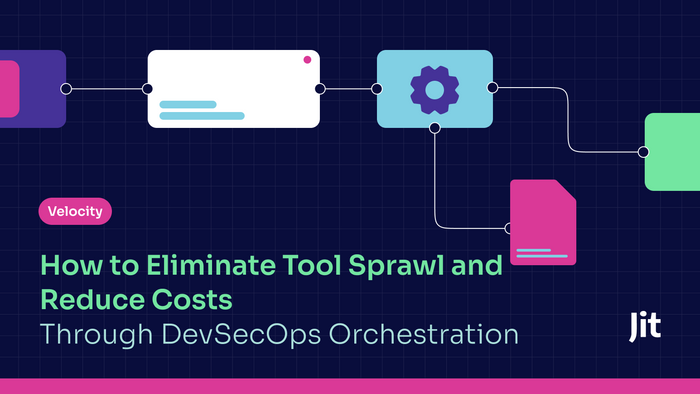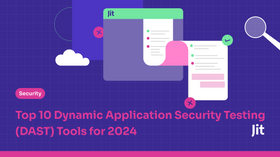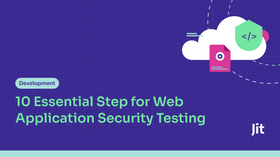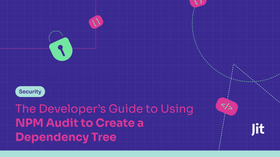How to Eliminate Tool Sprawl and Reduce Costs through DevSecOps Orchestration
Updated May 17, 2024

Developers aren’t security experts, which is why many rely on automated assistance to surface vulnerabilities that could have otherwise slipped through the cracks.
As attack surfaces grow, developers may need an increasingly large and unwieldy security tool set. Full code-to-cloud security coverage requires scanning code, containers, third party dependencies, APIs, cloud infrastructure misconfigurations, CI/CD misconfigurations, and more.
This can require technologies like:
- Static Application Security Testing (SAST)
Software Composition Analysis (SCA) to check open source components for vulnerabilities
Secrets detection
Container scanning – from base image, to registry, to runtime
Dynamic Application Security Testing (DAST)
IaC security scanning
Cloud Security Posture Management
CI/CD security misconfiguration detection
Researching, purchasing, installing, and configuring all of these tools is expensive and time-consuming. Neglecting these tools could open your system to new risks, but implementing them all is unrealistic.
At Jit, we believe DevSecOps orchestration is the path to full code-to-cloud security coverage, without compromising on cost or complexity.
What is DevSecOps orchestration? Why is it helpful?
The term “security orchestration” is often associated with “Security Orchestration and Automated Response” (SOAR), a discipline that focuses on creating automated workflows to respond to security incidents. In this post, the term “orchestration” will concern assembling the toolsets, integrations, and processes needed to secure applications and cloud infrastructure.
DevSecOps orchestration automates the process of selecting, integrating, and running code security and cloud security tools, while unifying them under a single execution framework and UX.
Let’s explore some of the key elements of DevSecOps orchestration, and how it simplifies code-to-cloud security.
Automate security integrations with the CI/CD pipeline
Rather than implementing a variety of code and cloud security tools from scratch – each of which have their own configuration requirements and integrations – orchestration pre-packages separate security tools and unifies their integration with the CI/CD pipeline, which is explained in further detail here.
This delivers full code-to-cloud security coverage without the hassle of manually configuring and integrating each tool.
Data normalization
Security orchestration unifies tooling that generates results in different data formats. To provide a truly seamless experience across tooling, security orchestration tools need to normalize the data across different toolsets.
In this blog, Jit’s CTO and Cofounder David Melamed describes how to use the AWS Security Lake Service to standardize and normalize data from disparate sources into a unified schema.
A unified security UX
Not only does security orchestration simplify implementation, it also simplifies day-to-day security operations for developers actually using the tools.
If there are multiple security tools integrated into the CI/CD pipeline, navigating across these siloed UIs can slow down developer velocity, which can cause them to neglect or abandon the tools altogether.
By unifying the execution and UX of multiple tools, developers can scan their code and cloud at a single point in the SDLC, with a single data format to view their security findings. This can make security much easier to adopt for developers.
Lower costs
Lastly, DevSecOps orchestration is almost certainly more cost effective than purchasing individual tools.
Why not use open source? For some teams, open source security tooling works just fine on its own. For others, as we described earlier, it can be a headache to research, configure, integrate, and maintain open source tooling.
DevSecOps orchestration often leverages open source security tooling as the engines to analyze the code, so there are no commercial costs per tool.
For those using proprietary tooling or can’t keep up with open source maintenance, orchestration can be an easy way to lower costs.
DevSecOps Orchestration with Jit
Jit uses DevSecOps orchestration to implement the full breadth of code-to-cloud security technologies into our users’ CI/CD pipelines – including SAST, open source security (SCA), SBOM, secrets detection, IaC scanning, CSPM, CI/CD misconfiguration detection, and DAST.
By unifying the integration, execution, and UX for developer security tools, Jit makes it easier to implement security into developer environments, while making it faster for developers to secure their code.
Full coverage in minutes with Security Plans
At Jit, our approach to DevSecOps orchestration is enabled by Security Plans, which implements out-of-the-box security tool sets, CI/CD integrations, and vulnerability monitoring in a matter of minutes.
Each Security Plan includes a specific set of security tools needed to serve specific use cases, like gaining compliance with a specific standard and implementing application security for a new web app. If we don’t have the Plan you need, you can easily build your own.
How does it all work?
After connecting Jit with your GitHub account, simply activate the plans to scan your repos, while also implementing continuous scanning for developers. New scans will trigger whenever developers create a new PR, as described in the section below. You can learn more at How Jit Works.
Security orchestration with leading security tech
Jit’s Security Plans assemble toolchains from leading open source technologies like Semgrep for SAST, Gitleaks for secrets scanning, Prowler for CSPM, and NPM Audit for SCA.
While some may be spooked by using open source instead of the latest commercial scanning technologies, we’ve tested and compared open source tools and have confirmed their results are higher fidelity than their commercial alternatives!
That said, customers can also integrate their favorite tools – whether they’re open source, commercial, or cloud-native – into Jit’s orchestration framework for a more consistent DevSecOps experience.
Fast and unified testing is easy to adopt for developers
Critically, Jit’s tool sets are delivered entirely within the developer routine, making them easy to adopt
- As new code is merged, Jit automatically invokes security scans and auto remediation within the PR or IDE, so developers never need to leave their environment.
Jit’s iterative scanning only surfaces vulnerabilities related to newly introduced code, which reduces scanning times by 85% and prevents floods of vulnerabilities from overwhelming developers.
Context Engine uses ML to determine whether vulnerabilities are exposed and exploitable in production, which drastically minimizes false positives while making top risks easier to prioritize.
How to get started
To begin using Jit, start a free trial and install the Jit app on GitHub. This will enable Jit to scan your repos by running code analyses via GitHub Actions, so that code is never pulled to our cloud.
Next, choose and activate the best security plan for your use case, which will automatically scan all of your connected repos using the security controls defined in your Security Plan. The results will populate the backlog, which you can find in the left toolbar.
After activation, Jit will automatically trigger security scans as new PRs are created, which present newly introduced vulnerabilities to developers as they merge their code.
Looking for more info before you get started? Check out the How Jit Works page or schedule a demo.





